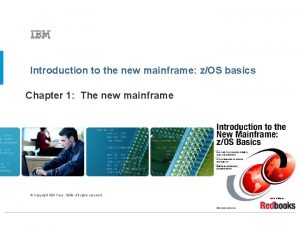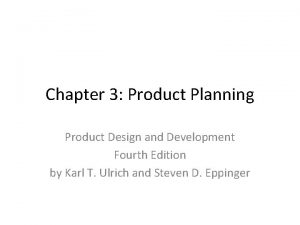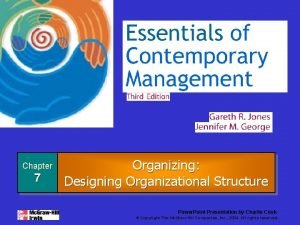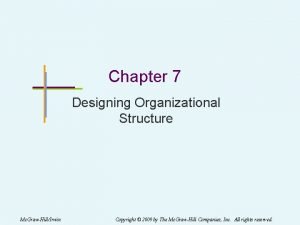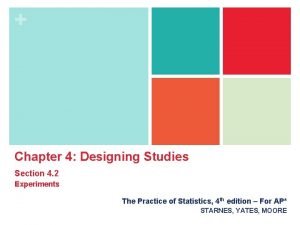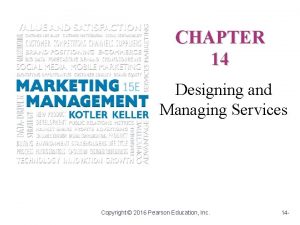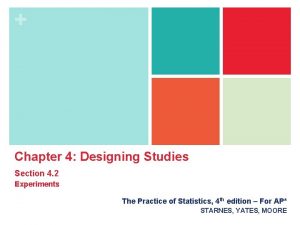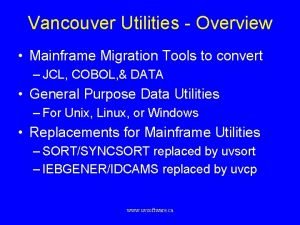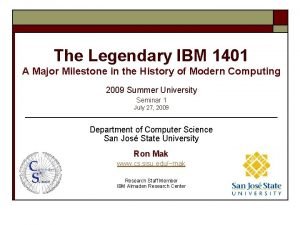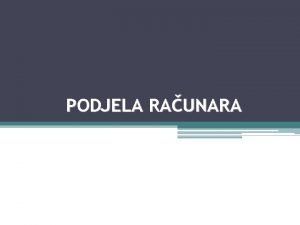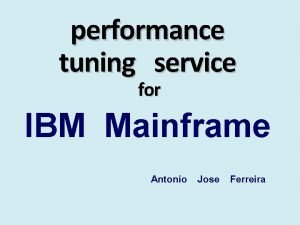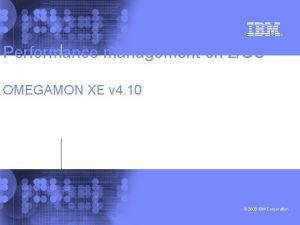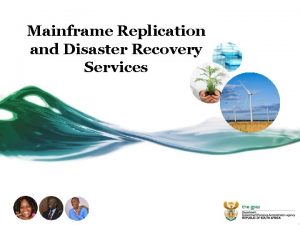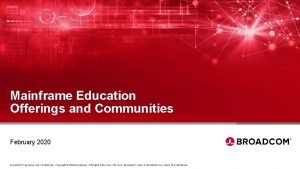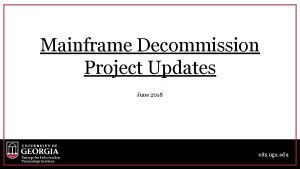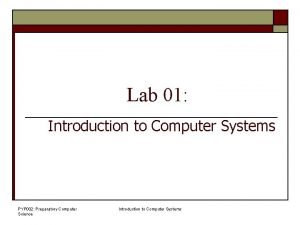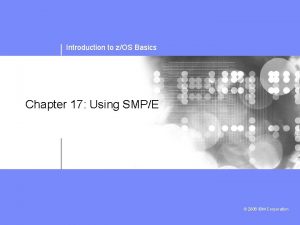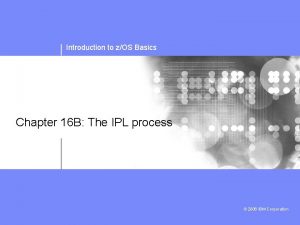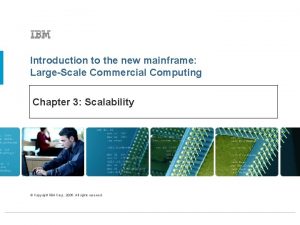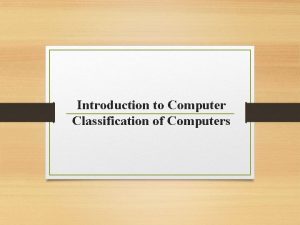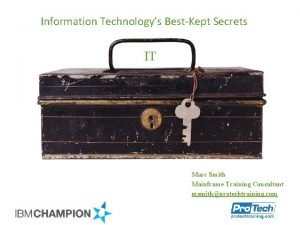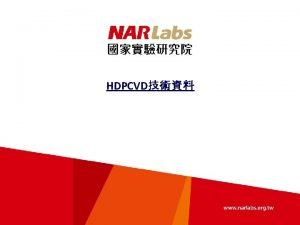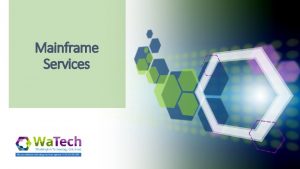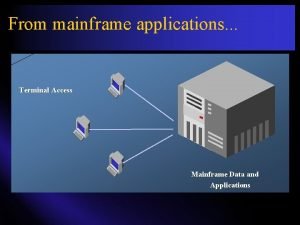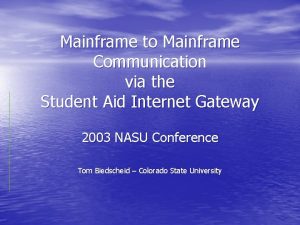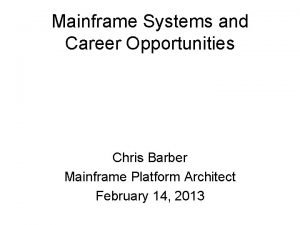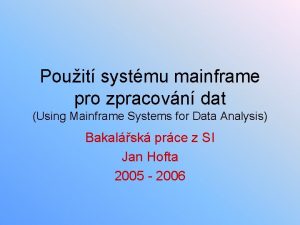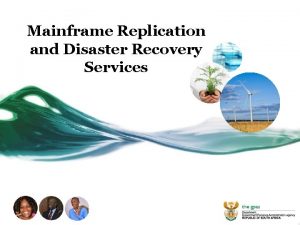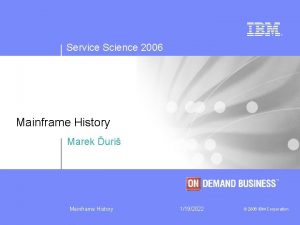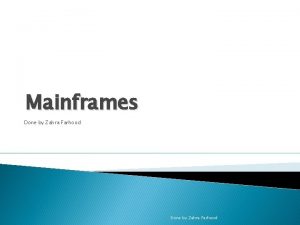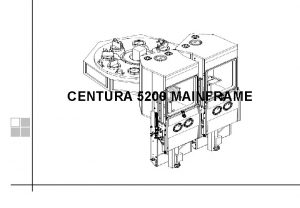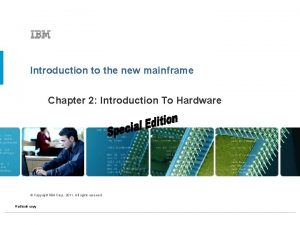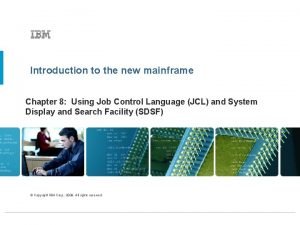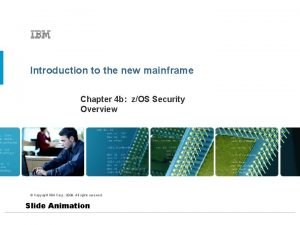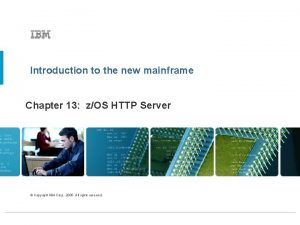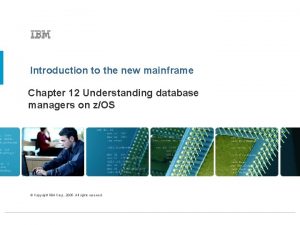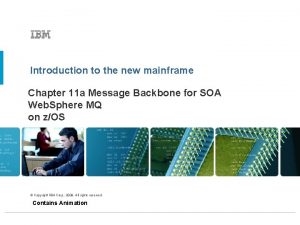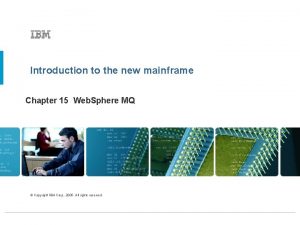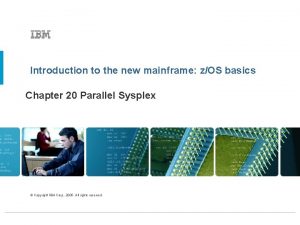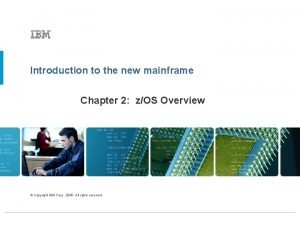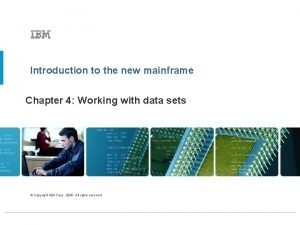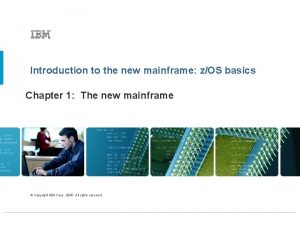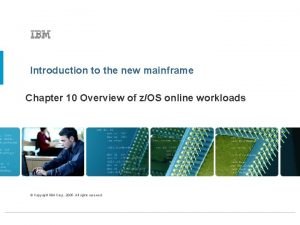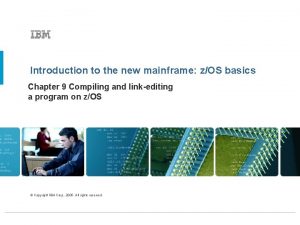Introduction to the new mainframe Chapter 7 Designing
























- Slides: 24

Introduction to the new mainframe Chapter 7: Designing and developing applications for z/OS © Copyright IBM Corp. , 2005. All rights reserved.

Introduction to the new mainframe Chapter 7 objectives Be able to: • List the major considerations for designing an application for z/OS. • Describe the advantages and disadvantages of using batch versus online for an application. • Briefly describe the process for testing a new application on z/OS. • List three reasons for using z/OS as the host for a new application. © Copyright IBM Corp. , 2005. All rights reserved.

Introduction to the new mainframe Key terms in this chapter • application • ASCII • DFSORT • EBCDIC • enablement • executable • user requirements • system © Copyright IBM Corp. , 2005. All rights reserved.

Introduction to the new mainframe What is an application? An application • A piece of software that will satisfy certain specific requirements or resolve certain problems • The solution can reside on any platform or combination of platforms © Copyright IBM Corp. , 2005. All rights reserved.

Introduction to the new mainframe Who designs applications for the mainframe? Application designer: Determines the best programming solution for an important business requirement. Understands: • Business objectives of the company • Other roles in the mainframe IT organization • Company’s hardware and software. Has a global view of the entire project. © Copyright IBM Corp. , 2005. All rights reserved.

Introduction to the new mainframe Who writes applications for the mainframe? Application programmer: Builds, tests, and delivers the applications that run on the mainframe for end users Works from the application designer’s specifications Uses a variety of tools Application programming involves many iterations of: Code changes and compiles Application builds Unit testing. © Copyright IBM Corp. , 2005. All rights reserved.

Introduction to the new mainframe Where applications reside © Copyright IBM Corp. , 2005. All rights reserved.

Introduction to the new mainframe Application development lifecycle © Copyright IBM Corp. , 2005. All rights reserved.

Introduction to the new mainframe Gathering requirements for the design Requirements: • Assess what needs to be accomplished • • Based on projects constraints Always keep in mind the end result Conduct interviews with users and stakeholders Verify our assumptions © Copyright IBM Corp. , 2005. All rights reserved.

Introduction to the new mainframe Types of requirements Accessibility Client Interoperability Recoverability Serviceability Availability Connectivity Performance Resource can be monitored, controlled, managed, and administered Usability Frequency of data backup Distributed Portability Secure centralized controllable capacity Web services Changeability Inter-communicable Preventing failure and fault analysis © Copyright IBM Corp. , 2005. All rights reserved.

Introduction to the new mainframe Design phase © Copyright IBM Corp. , 2005. All rights reserved.

Introduction to the new mainframe Design decisions – based on requirements Batch versus online Database, tape, flat file, etc. COBOL, PL/I, JAVA, Assembler z/OS, Unix, Linux, Windows Capacity of server Server type Develop or purchase package or both © Copyright IBM Corp. , 2005. All rights reserved.

Introduction to the new mainframe Development phase © Copyright IBM Corp. , 2005. All rights reserved.

Introduction to the new mainframe Developing an application for the mainframe Programmer uses as input the specifications of the designer Usually follows this process: • • Code a module. Test a module for functionality. Make corrections to the module. Repeat from step 2 until successful. © Copyright IBM Corp. , 2005. All rights reserved.

Introduction to the new mainframe Programming tools for the mainframe • Editor • TSO or ISPF-based • Repository for source code • PDS, SCLM or some other repository • Job monitoring and viewing software • SDSF or equivalent product • Debugging tools © Copyright IBM Corp. , 2005. All rights reserved.

Introduction to the new mainframe Debugging a program on the mainframe • • • Log on to TSO Enter ISPF – check out source code Edit source and make modifications Submit compile JCL to verify syntax Switch to SDSF to view job status View job output in SDSF – check for errors Correct errors Repeat from “Submit” until errors are corrected Save source code in repository © Copyright IBM Corp. , 2005. All rights reserved.

Introduction to the new mainframe Interactive Development Environment (IDE) IDEs accelerate development process • • Edit source on work station Run compiles off-platform Perform remote debugging Useful for “hybrid” applications • • Host-based COBOL with CICS, IMS, and Web browser-like interface Provides unified development environment to build OLTP in HLL and HTML front-end interface © Copyright IBM Corp. , 2005. All rights reserved.

Test phase

Introduction to the new mainframe Test phases (continued) Many levels of testing • User testing for functionality, acceptance • Performance (stress) testing • Integration testing (with other systems) Validate the testing results Final step before going production © Copyright IBM Corp. , 2005. All rights reserved.

Production phase

Introduction to the new mainframe Go production Document: • Operational procedures • Training manuals (users, administrators, etc. ) Promote application to production status • Implement change control process Hand over to operations © Copyright IBM Corp. , 2005. All rights reserved.

Introduction to the new mainframe Maintenance phase Ongoing day-to-day changes/enhancements Responsibility for maintenance may change to another group or stay with developers © Copyright IBM Corp. , 2005. All rights reserved.

Introduction to the new mainframe Maintaining and enhancing existing systems Maintenance and enhancement is a primary role of HLL programmers on the mainframe Large corporations continue to use COBOL and other traditional languages for new development: • Existing applications are in HLLs such as COBOL and PL/I • New applications are in JAVA, COBOL and PL/I COBOL, PL/I continue to be enhanced to exploit new technologies and new data formats © Copyright IBM Corp. , 2005. All rights reserved.

Introduction to the new mainframe Summary Designing and developing an application for the mainframe is similar to other platforms, but some of the questions and conclusions are different. Life cycle of designing and developing an application to run on z/OS includes phases of: • • • Requirements gathering and analysis Design Development Test and debugging Production Maintenance © Copyright IBM Corp. , 2005. All rights reserved.
 Z/os basics
Z/os basics Chapter 16 toward a new heaven and a new earth
Chapter 16 toward a new heaven and a new earth Product design planning
Product design planning Designing and managing service processes
Designing and managing service processes Chapter 7 designing organizational structure
Chapter 7 designing organizational structure Chapter 7 designing organizational structure
Chapter 7 designing organizational structure Chapter 4 designing studies
Chapter 4 designing studies Services are typically produced and consumed simultaneously
Services are typically produced and consumed simultaneously Variables affecting channel structure
Variables affecting channel structure Chapter 4 designing studies
Chapter 4 designing studies Mainframe tools and utilities
Mainframe tools and utilities Ibm 1401 instruction set
Ibm 1401 instruction set Veliini
Veliini Mainframe tuning
Mainframe tuning Omegamon mainframe
Omegamon mainframe Mainframe disaster recovery
Mainframe disaster recovery Broadcom vitality program
Broadcom vitality program Eits uga
Eits uga Pppe002
Pppe002 Smpe tracking
Smpe tracking Ipl ibm mainframe
Ipl ibm mainframe Mainframe scalability
Mainframe scalability Classification of computer
Classification of computer Smith mainframe
Smith mainframe Applied materials centura ultima hdp
Applied materials centura ultima hdp
